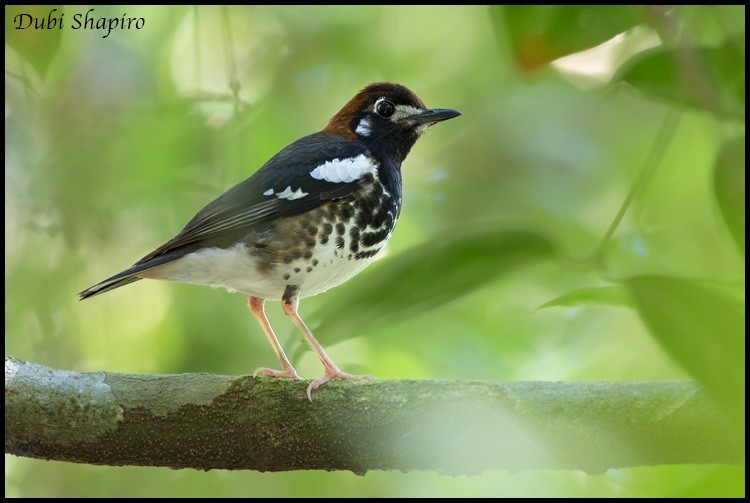Chestnut-capped Thrush
A species of Ground Thrushes and Allies Scientific name : Geokichla interpres Genus : Ground Thrushes and Allies
Chestnut-capped Thrush, A species of Ground Thrushes and Allies
Botanical name: Geokichla interpres
Genus: Ground Thrushes and Allies
Content
Description General Info
 Photo By Dubi Shapiro
Photo By Dubi Shapiro Description
The chestnut-capped thrush (Geokichla interpres) lives in forests and woodlands of Southeast Asia. It is a songbird species in the family Turdidae. Traditionally, it has included the Enggano thrush as a subspecies, but a recent review recommended treating them as separate. Consequently, the chestnut-capped thrush is monotypic. The chestnut-capped thrush has a black back and a white belly with black spots. As its common name suggests, it has a chestnut cap. Its face is black with a white mark on the cheeks and another on the lores. The superficially similar chestnut-backed thrush is substantially larger when seen alongside one another, and has a black crown and rufous back, whereas the Enggano thrush has an olive-ochre back and little or no white on the lores and auriculars. The chestnut-capped thrush is very rare in zoos. According to ISIS, Chester Zoo had the only female outside of Asia, until she died in 2007. However, small numbers have been held in private European aviaries since the mid-1990s and very small numbers remain as of late 2009. It was formerly classified as a species of Least Concern by the IUCN. New research has shown it to be rarer than previously believed. Consequently, it was uplisted to Near Threatened status in 2008 and once again to Endangered in 2020. 
Size
18 cm
Nest Placement
Ground
Feeding Habits
Chestnut-capped Thrush consumes a diet of invertebrates like earthworms, insects, snails, and fruits. Chestnut-capped Thrush forages on the ground and trees, even sharing fruiting canopies with G. dohertyi. Males may pass food to mates, and fledglings regurgitate seeds, indicating varied feeding behaviors and potential diet sharing.
Habitat
The chestnut-capped Thrush is commonly found in the lower to middle storey of primary forests, as well as tall secondary and logged forests. This bird also inhabits woodlands, wooded lots, and is occasionally observed in tree plantations such as those of Albizia. Its habitat spans across various Southeast Asian regions and it is known to prefer areas with forest gulleys, especially in the Philippines. Chestnut-capped Thrush generally occupies the broadleaf evergreen forests in the lowland regions but can also be found in similar habitats up to middle elevations.
Dite type
Frugivorous
General Info
Feeding Habits
Bird food type

Fruit

 Photo By Dubi Shapiro
Photo By Dubi Shapiro